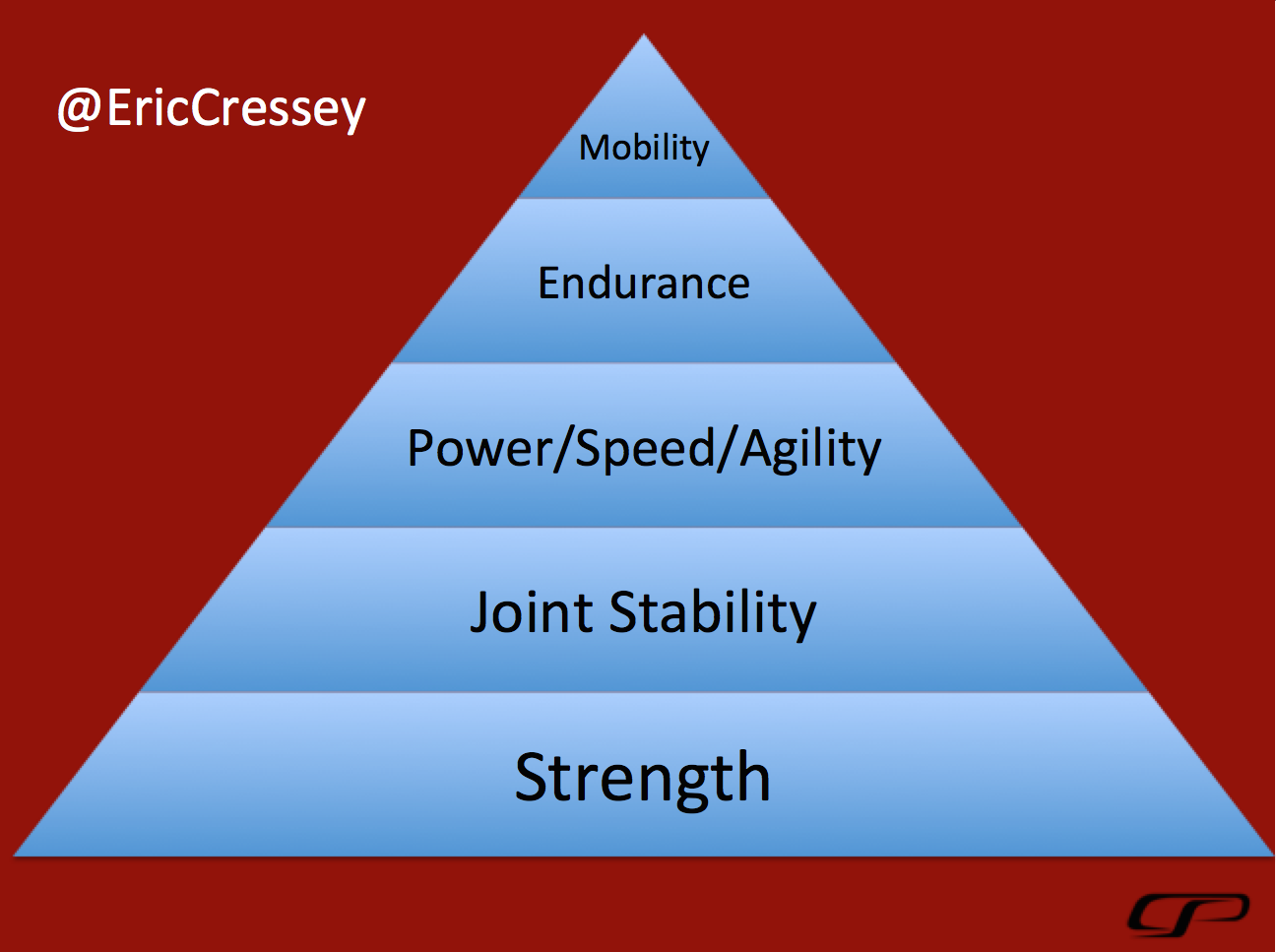
Crossfit and Confirmation Bias
Last month, I published a blog about the importance of building strength in the teenage years. In case you missed it, you can read it here.
The gist was that strength is foundational to many other athletic qualities: power, stability, endurance, and even mobility. In short, building strength in untrained lifters is low-hanging fruit that can have a massive impact on other domains. However, if you train many of the qualities higher up on this pyramid early in a training career, you don’t see very profound changes to athleticism. It’s why the kid who just does agility ladders doesn’t get much more agile, and the cross-country runner can’t go faster just by running slow.
As is always the case with my new articles, I sent it out to my newsletter list – and there are always a dozen or so people who’ll reply to the article. One, in particular, stood out for me:
“This reads as an incredible endorsement of multimodal training like Crossfit! Which highlights the very different skills in the article! Thanks for sharing!”
This is an incredibly well-intentioned person, but unfortunately, he could not be any more incorrect. And, it’s a nice illustration of the confirmation bias we often encounter in the training world.
This gentleman really loves Crossfit, and that’s fine. He can train a bunch of different qualities and have a lot of fun. That does not mean, however, that concurrent training of all these qualities is a way to optimize long-term athletic development in teenagers (or any age of athletes). His confirmation bias leads him to believe that what he enjoys (and likely what has worked for him) will be good for every scenario he encounters.
Sure, you can build a lot of these qualities simultaneously, especially in untrained individuals. However, you are not going to develop a 95mph fastball or run a 10-second 100m dash if you’re consistently rowing 1000m, doing sets of 15 power cleans, or rocking kipping pull-ups like they’re going out of style. And, you’re going to have a much harder time staying healthy as you embark on these goals, as each sport has unique energy systems requirements and position-specific demands. How often do you see aggressive hip-shoulder separation, appreciable single-leg work, and end-range shoulder external rotation in the typical Crossfit program?
Again, if you want to do these things, by all means, go for it and have fun – but don’t confuse them with a plan that’s optimized for athletes. Random programming might keep training novel, but it delivers random results – and athletic success is much more the result of targeted efforts to meticulously address the growth windows one can identify. In short, you can’t take general solutions to specific problems.




